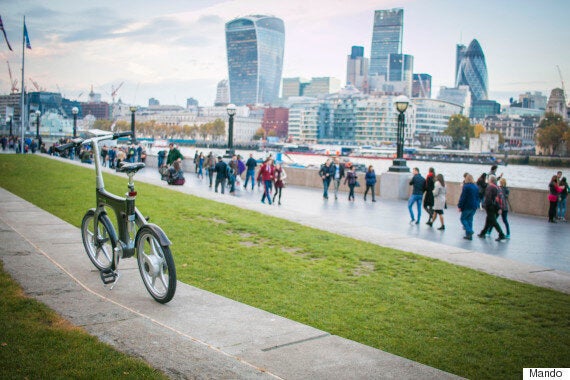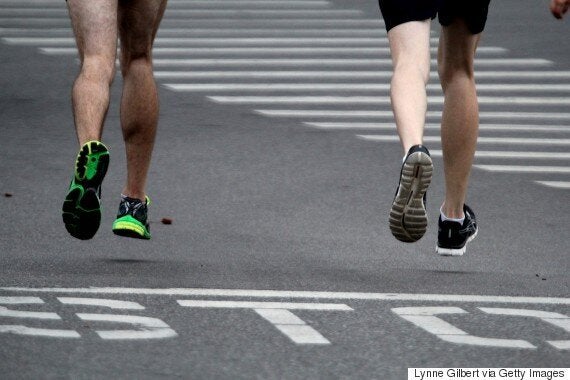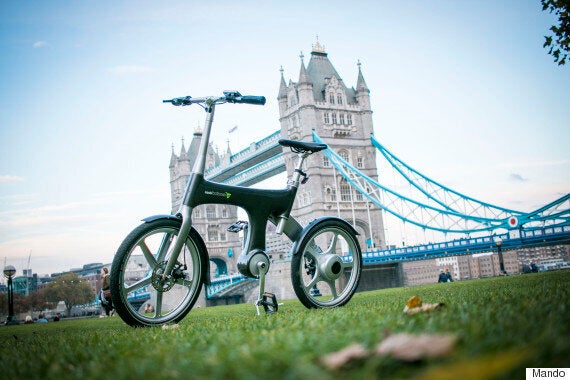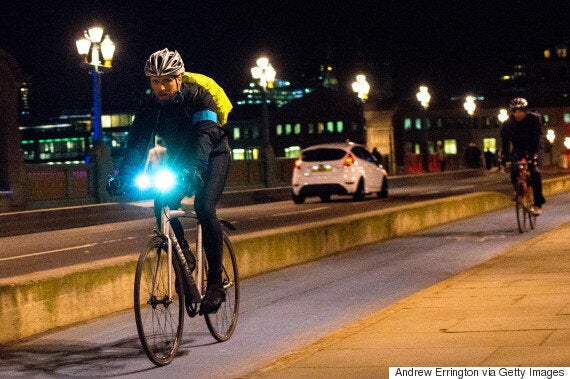London Tube commuters put up with a lot, from periodic Tube strikes to getting way too close for comfort with hundreds of strangers on a daily basis.

So it's no surprise that alternative commuting ideas - from paddle boarding across the Thames to kick scooting - are taking off. Especially when you look at the benefits to your health and fitness, bank balance, energy levels and state of mind.
"We’ve seen a rise in cycle commutes in London. 8,639 London cycling commutes are logged on Strava every single day and London sees 46% of all cycle activities happen within the commute windows of 7am - 9am and 5pm - 7pm," says Simon Klima, UK Country Manager at Strava.
"In addition, 51.4% of our London members have uploaded at least one commute to our platform.
"This is a reflection of the growth that we have seen in cycling across the UK over the recent years. London has a huge and growing concentration of both recreational and commuting cyclists, as cycling becomes more and more popular in the capital."
Time to grab your wheels and trainers: here are four commuting alternatives that you can comfortably integrate into your life. No need to mind the gap.

1. Go electric
An alternative for those looking for a cost-saving, fuel-sparing and hassle-free way to get to the office each day is electric bicycles. Ideal for those who don't have showers in their office, e-bikes like the Mando Footloose IM (available at Just eBikes and Fully Charged) allow you to exercise and feel good about your environmental conscientiousness without breaking a sweat en route to work.
With a sleek and stylish chain-free design for a futuristic feel, the award-winning Mando Footloose IM features integrated automotive technology like the Human Machine Interface (HMI), aka the bike's dashboard. A smartphone sized device mounted on the handlebars, the HMI enables the cyclist to select pedal resistance and acceleration modes and ensures that riding uphill is as easy as cycling down flat roads. The smart technology allows you to track your journeys, as well as fitness and health goals.
The HMI also acts as a security system for the bike (if removed, the bike won't function), protecting against theft.
What's more, the bike has a removable battery pack, which means charging is quick and easy. All round winner.

2. Pick up a board
Forget everything you think you know about skateboards: they're no longer the transportation mode of choice for teens and punks exclusively. Urban commuters like skateboards because they're light and easy to carry, making them a smart choice for professionals with a long commute who may need to take a train or bus for part of their journey.
The basic skateboard has also evolved over the years; now you'll find longboards (a longer version of the classic that's great for going downhill), electric skateboards and 'hoverboards,' which are super cool but illegal to ride in public in the UK. So we'd recommend those for work-from-home commutes.
SEE ALSO:
The Cycling Apps You Should Be Using Now
Cycling To Work: Best Safety Tips And Things You Shouldn't Leave Home Without (PICTURES)
3. Hop on a bicycle

London's "cycling superhighways" and city bikes have made getting around the capital on two wheels more straightforward than ever before; according to 2014 figures from Knight Frank, 30,000 cycle journeys took place across London's streets during rush hour each day. Interested in joining the movement? BT Local Leader Kirsty Cameron, who set up a women's cycling group in Forfar, Scotland, gives us some of her top tips for bike-commuting.
- If you have a long commute, get off a stop or two early and cycle the difference. If you live in London it's easy to hop on a Boris bike or if not, get a folding bike.
- Often cycling is quicker and more direct than the train door to door. Work out your quickest and safest route and map the difference - you'll be surprised how much time and hassle you can save.
- There's no more rushing for your train and waiting for the next one. You can go when you're ready.
- You can save a fortune on public transport.
4. Run to work
You don't need to be training for a marathon to start running to work. A 2014 study by the Royal Holloway University of London found that the number of people choosing to run to or from work as an alternative mode of transport tripled in the last two years.
Not only do runners get to admire London's historic buildings and river views, starting your day off with a run can be a great way to clear your head and boost your energy levels for the day ahead (running home after work can help you relax, too). And the kit required is minimal. Potential downsides? Be sure that your office has a shower so you don't have to spend the day soaked in your own sweat.